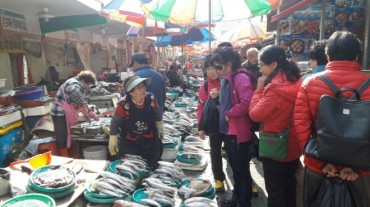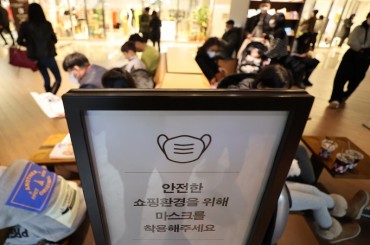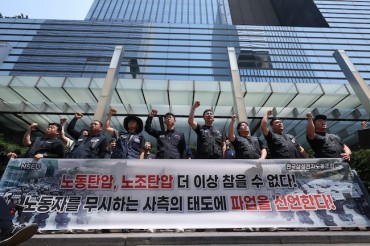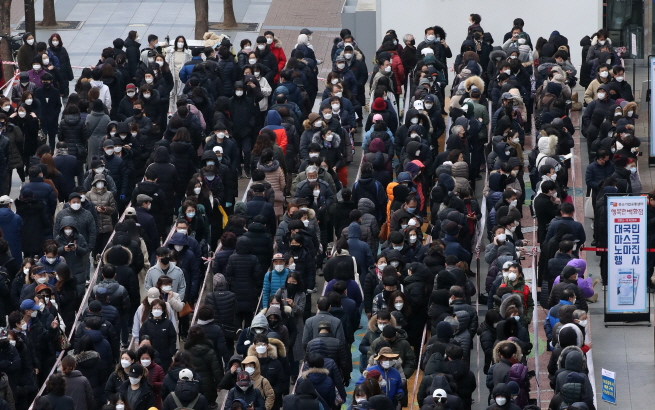
People form a long line outside a department store in Seoul on March 3, 2020, to purchase face masks amid concern over the spread of the new coronavirus. (Yonhap)
SEOUL, March 5 (Korea Bizwire) — South Korea said Thursday it will fully ban exports of protective masks as the country is struggling to expand the supply of sanitary products here amid the spread of the novel coronavirus.
Starting Friday, the country, which earlier set a ceiling of 10 percent of daily output for exports, prevents overseas shipment of face masks amid growing public anger over the bungled supply scheme.
Under the scheme, the country will also speed up local production with a goal of producing 14 million sheets daily, up from the current 10 million, according to the Ministry of Economy and Finance.
Of the total masks produced here, South Korea will allocate 80 percent of the production to public retail sales platforms, rising from the 50 percent quota set last week.
The remaining 20 percent will be tightly controlled as well, with any sales of more than 10,000 sheets to a single buyer required to win approval from the government.
South Korea also vowed to closely monitor the sales of protective masks.
Starting Monday, the country will operate a de facto distribution system for protective masks, allowing people to purchase only two sheets per week from pharmacies.
South Koreans will be allowed to purchase masks on designated days of the week depending on their year of birth.
Foreigners residing in South Korea can hand in their proof of healthcare insurance along with their Alien Registration Card.
To induce mask producers to expand their supply, South Korea said it will purchase products produced during weekends or nighttime at higher prices.
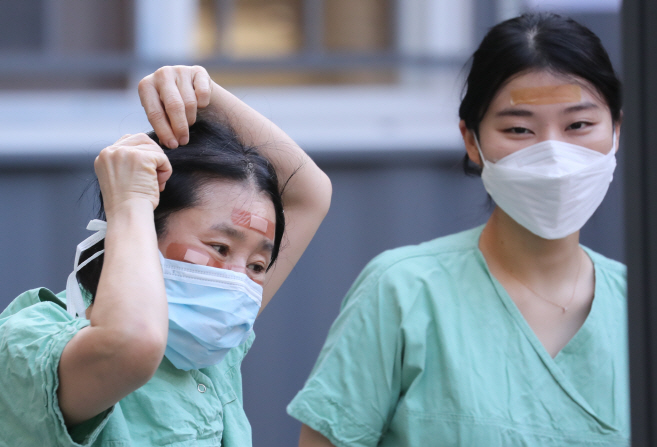
Medical staffers use band-aids to cover wounds on their faces caused by wearing protective goggles for long hours while treating coronavirus patients at Dongsan Hospital in Daegu, 300 kilometers southeast of Seoul, on March 4, 2020. (Yonhap)
The decision came as the daily production plummeted to 7 million over the previous weekend.
To cope with the shortages in materials vital for production, the country will also ban all exports of melt-blown nonwoven fabric filters starting Friday, although exceptions can be granted.
Under the emergency rule, all producers and retailers of melt-blown nonwoven fabric filters will be obligated to report their production and inventories to the ministry every day.
The government can ask the companies to adjust their production and sales destinations, providing them with support including workforce if necessary.
The new regulation on fabric filters will be effective through June 30.
Violators could face a prison sentence of up to two years or a maximum fine of 50 million won (US$42,200).
South Korea will allocate 2.8 billion won to renovate existing production facilities of diapers and tissues to produce filters, with a goal of increasing the daily production of the material to 27 tons by the end of April, up from the current 12.9 tons.
The COVID-19 outbreak, which had infected 6,088 people in South Korea as of Thursday, has caused severe shortages of face masks as many see them as a daily necessity, forcing citizens to wait for long hours at designated locations across the nation.
The price of such masks skyrocketed on shopping websites as well, with South Korea intensifying its crackdown on illegal hoarders.
(Yonhap)




